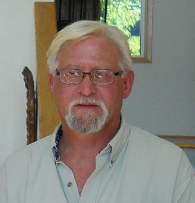It takes time to develop a buyer’s list but as a real estate wholesaler, one of most important (if not THE most important) asset you have is a strong buyers' list. It can take months and even years to build a strong buyers' list but it's something that you should always be working on. This is especially true for wholesalers but is also valuable to rehabbers, agents, and other investors.
Having a strong buyers' list saves you both time and money and of course, time is money. If you're in a particularly strong market (which are abundant today), it's possible you could be wholesaling 3 to 6 houses a month. With a strong buyers' list of knowledgeable investors, you could save tens of thousands of dollars in commissions. At an average commission of $6,000 on a $100,000 sale, averaging 3 sales per month amounts to a $18,000 in savings.
The short answer is that anyone with an interest in investing in real estate belongs on your buyers' list. The money question is how do you build a more profitable buyers' list? It's as simple as joining real estate investing groups, placing craigslist ads, and networking through MeetUp or other professional groups of people with money to invest.
A big key to wholesaling multiple properties each month is taking the time to find out what people on your buyer's list are looking to invest in. That means asking questions and taking notes. On craigslist, it means posting adverts reading, "I birddog houses for investors, what are you looking to invest in?" At networking opportunities, you ask the same opening question but go into more detailed questions once you have a conversation started. Then you go out hunting for the houses that your buyers have shown an interest in.
Over time, you'll discover who are your more serious and repeat buyers. For wholesalers, these tend to be rehabbers, investors interested in leases with an option to purchase, and landlords. You'll save time, effort, and make more money as you determine and focus on your key and repeat buyers are. You'll be able to focus your efforts on these particular investors and make more profit by delivering up the exact properties these investors are looking for.
Beyond networking and craigslist, look for professionals that know people with investment dollars. Typically, these include accountants, lawyers, doctors, and other professionals with money to invest. Particularly accountants and lawyers. These professionals are constantly in contact with not only potential investors but also people who fall on hard times and have an immediate need to sell investment properties to raise quick cash (distressed sellers). Bankruptcy and probate lawyers are good sources for distressed properties. Nevertheless, don't ignore doctors. Even if the ones you know aren't looking to invest, they have well-healed friends looking for investment opportunities. The bottom line is you need to be networking and building relationships with the people that have money.
A few last words of advice about contacting your buyers. Don't mass email descriptions of the properties that you have for sale. At a minimum, use an autoresponder that sends an individual email to everyone on your list with only the individual's name at the top of the email. Better yet, send customized emails describing why the property meets the person's investment criteria. Also, keep in mind that when wholesaling properties, you don't always have to own them. Sandwich lease options can put you in control of a property with little or none of your own money directly in the deal. Private lenders and hard moneylenders are also friends to wholesalers.
What are you and other wholesalers you know doing to find buyers? Please leave a comment.
 Author bio: Brian Kline has been investing in real estate for more than 35 years and writing about real estate investing for ten years. He also draws upon 37 plus years of business experience including 12 years as a manager at Boeing Aircraft Company. Brian currently lives at Lake Cushman, Washington. A vacation destination, a few short miles from a national forest. In the Olympic Mountains with the Pacific Ocean a couple of miles in the opposite direction.
Author bio: Brian Kline has been investing in real estate for more than 35 years and writing about real estate investing for ten years. He also draws upon 37 plus years of business experience including 12 years as a manager at Boeing Aircraft Company. Brian currently lives at Lake Cushman, Washington. A vacation destination, a few short miles from a national forest. In the Olympic Mountains with the Pacific Ocean a couple of miles in the opposite direction.